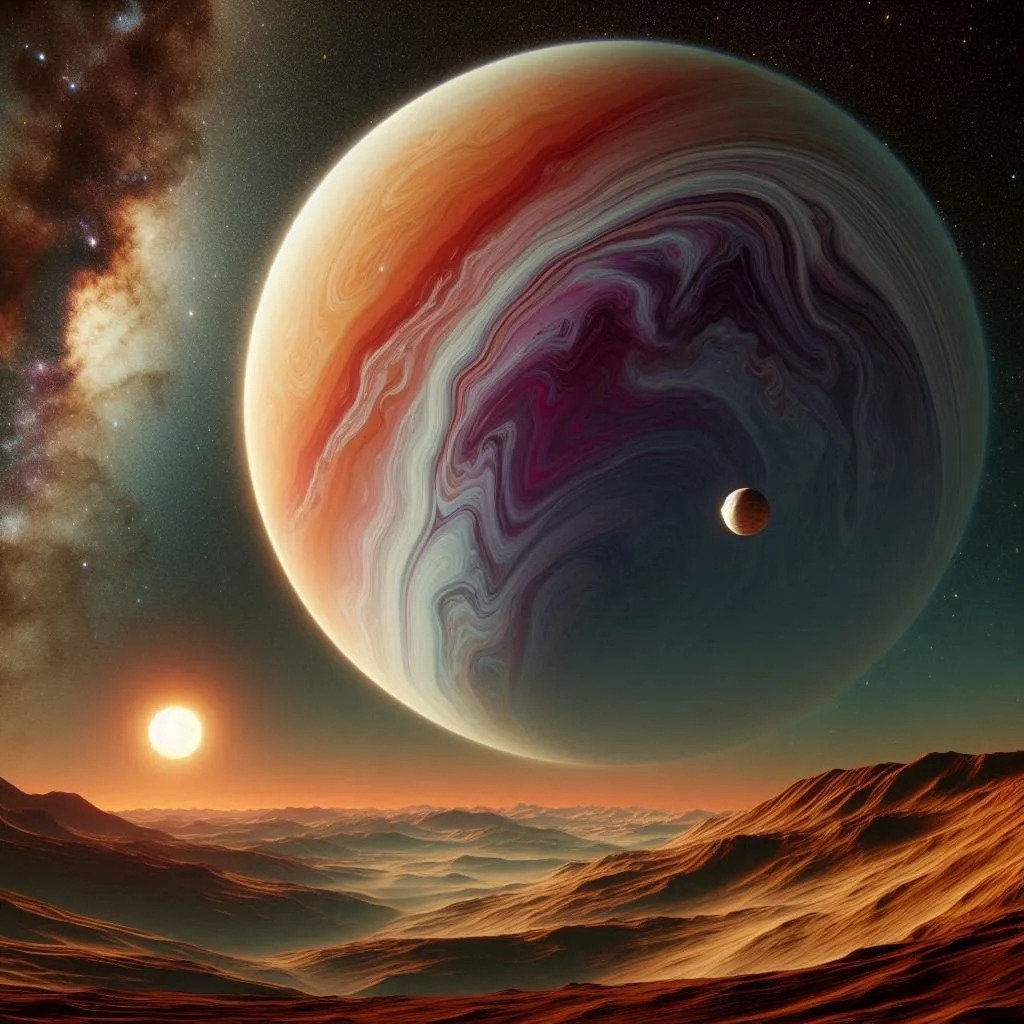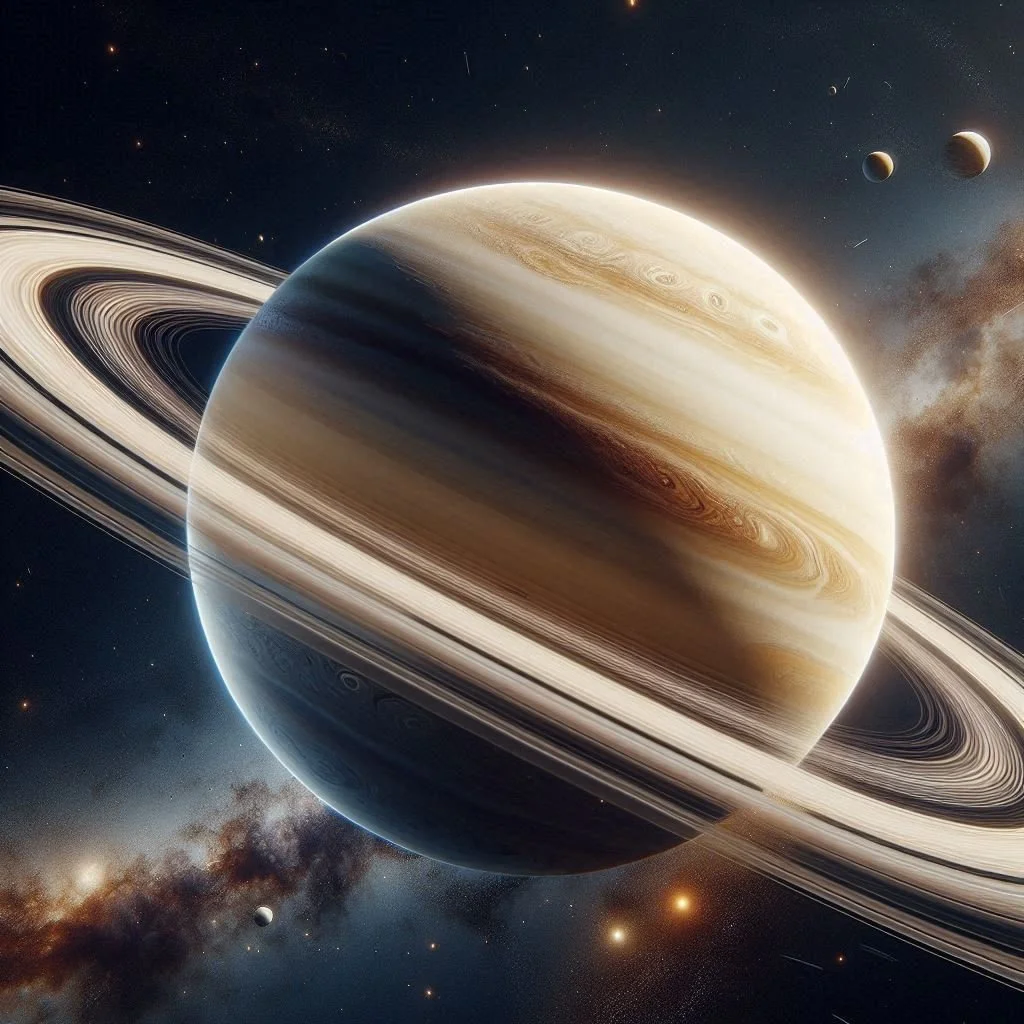
The Journey of Lonely Planets: How Planet-Planet Scattering Creates Free-Floating Worlds
Planet-planet scattering can eject planets from their systems, creating free-floating planets (FFPs). Simulations reveal that 40-80% of planets are ejected, often within 100 million years, with speeds of 2-6 km/s. Collisions reduce ejections, and bound planets end up on eccentric orbits. To match observed FFPs, 5-10 planets must form per star, highlighting scattering as a key mechanism in their creation.

Unlocking the Secrets of WASP-121b with JWST
Using JWST's NIRSpec, researchers precisely measured the mass, age, and atmospheric dynamics of the ultra-hot Jupiter WASP-121b and its host star. They discovered strong winds in the planet's atmosphere and achieved unprecedented precision in mass and age estimates, revealing a 1.11-billion-year-old system. This study showcases JWST's transformative role in advancing exoplanet research.

A Fading World Around a Bright Star: Unveiling a Disintegrating Planet
Astronomers discovered BD+05 4868Ab, a disintegrating exoplanet with dramatic comet-like dust tails, using NASA’s TESS. The planet orbits a bright, nearby star and sheds material due to intense heat, forming asymmetric dust tails. This discovery provides a closer, brighter example for studying rocky planet composition and the processes behind planetary destruction.

Unveiling Trends in Exoplanet Atmospheres with JWST
Researchers analyzed JWST data to uncover atmospheric trends in eight gas giant exoplanets, focusing on sulfur dioxide (SO₂), carbon dioxide (CO₂), and carbon monoxide (CO). They found that SO₂ correlates with cooler, smaller planets, while CO₂ highlights metallicity and CO dominates in hotter atmospheres. A new SO₂-L vs. CO₂-L diagram offers a framework for classifying exoplanet atmospheres, setting the stage for deeper insights as more data becomes available.

Unveiling a Trio of Earth-Sized Worlds Around a Neighboring Star
Astronomers discovered two Earth-sized planets, HD 101581 b and c, and a potential third around a nearby K-dwarf star, just 12.8 light-years away. These planets exhibit a "peas-in-a-pod" configuration, with similar sizes and evenly spaced orbits, making them excellent for studying planetary formation and atmospheres. The system’s brightness enables detailed follow-up observations to confirm the third planet and analyze the planets’ masses and atmospheric properties.

Unveiling Hidden Worlds: Hunting for Exoplanets with SHARK-NIR at the LBT
Astronomers used the SHARK-NIR instrument at the Large Binocular Telescope to investigate potential planetary companions causing proper motion anomalies in three nearby stars. While no planets were directly detected, constraints suggest companions with masses between 2–16 Jupiter masses at separations of 2.5–30 AU for HIP 11696 and HIP 47110. For HIP 36277, two candidate companions were identified, one requiring confirmation. The study highlights SHARK-NIR's capabilities and the value of combining imaging with astrometric data.

Decoding WASP-43b: Exploring Water in a Distant Gas Giant's Atmosphere
Scientists studied the atmosphere of the hot Jupiter WASP-43b using high-resolution spectroscopy, detecting water with a precise abundance measurement. Other molecules like methane and carbon dioxide were not found, and the carbon-to-oxygen ratio was constrained to less than 0.95. The findings align with prior observations from JWST, supporting a clearer day side and cloudy night side. Future telescopes may uncover more details about the planet's atmospheric composition.

Exploring Exoplanet Atmospheres: Low-Resolution Spectroscopy of Three Hot Jupiters with the Himalayan Chandra Telescope
This study used the Himalayan Chandra Telescope to perform transmission spectroscopy on three hot Jupiters, HAT-P-1b, WASP-127b, and KELT-18b, marking the first time this telescope was used for such analysis. The team observed Rayleigh scattering in the atmospheres of HAT-P-1b and WASP-127b, suggesting hazy atmospheres, while KELT-18b showed a relatively featureless spectrum. By combining ground-based data from HCT with space-based infrared observations, the researchers improved their atmospheric models, demonstrating the potential of smaller telescopes in exoplanet studies.

Searching for Planets Around Vega: A Summary of JWST Observations
Astronomers used the James Webb Space Telescope to search for planets around Vega, a star known for its prominent debris disk. While they detected two distant objects, these were likely extragalactic sources, not planets. The study set strict limits on the possible sizes of any planets in Vega’s system, ruling out planets larger than Jupiter within 10 AU. The smoothness of the debris disk suggests that any planets present are likely smaller than 0.3 times the mass of Jupiter.

Revisiting HD 28185: The Surprising Discovery of an Outer Planet in a Saturn-like Orbit
Astronomers recently revisited the exoplanet system around the star HD 28185, leading to a surprising discovery. While it was already known to host a giant planet with an Earth-like orbit, new research by Alexander Venner and his team revealed a second planet, HD 28185 c, previously thought to be a brown dwarf. This outer planet, about six times the mass of Jupiter, follows a Saturn-like orbit, making it one of the most distant exoplanets detected through radial velocity and astrometry methods. The findings offer exciting insights into how distant giant planets may be more common than previously thought.
